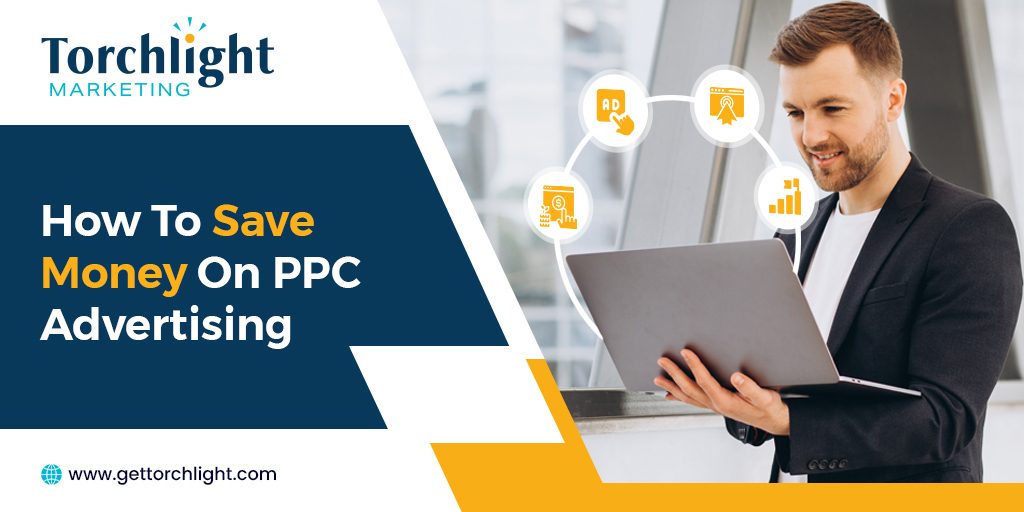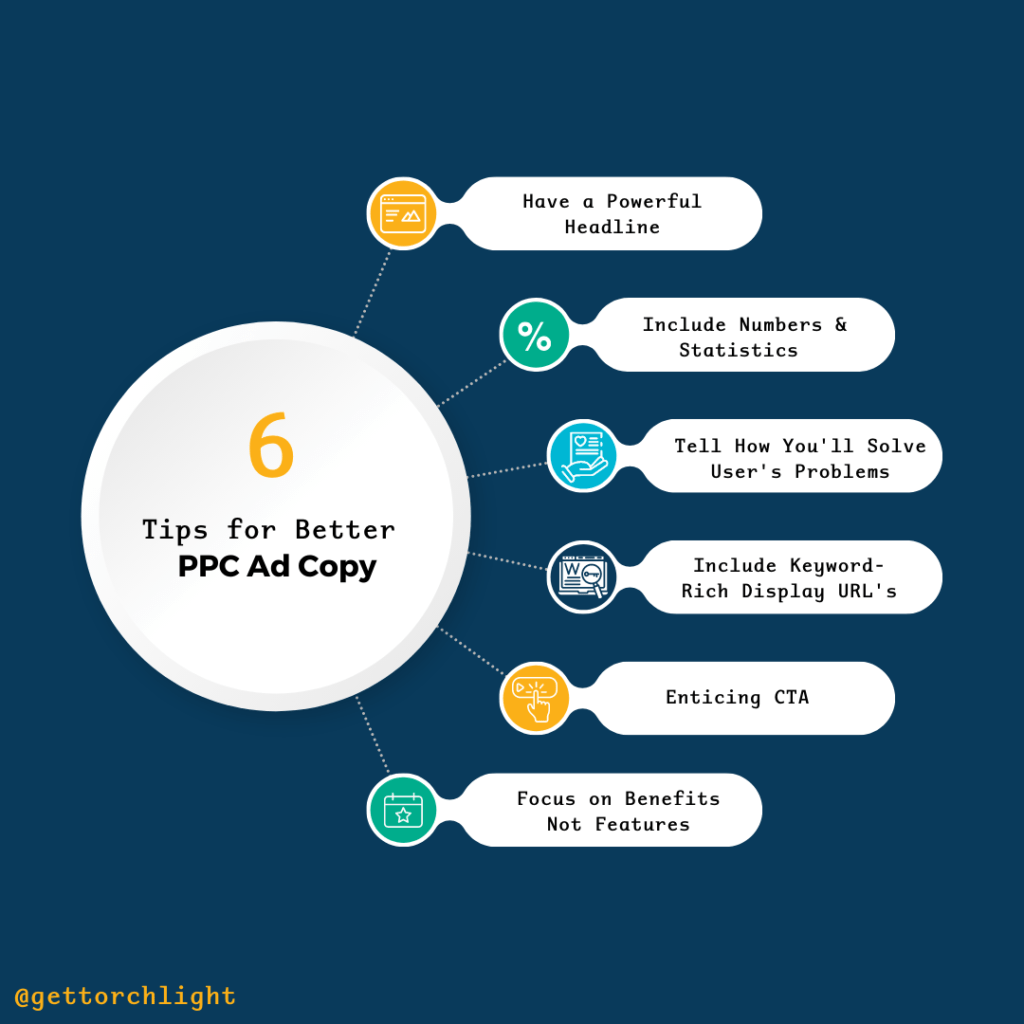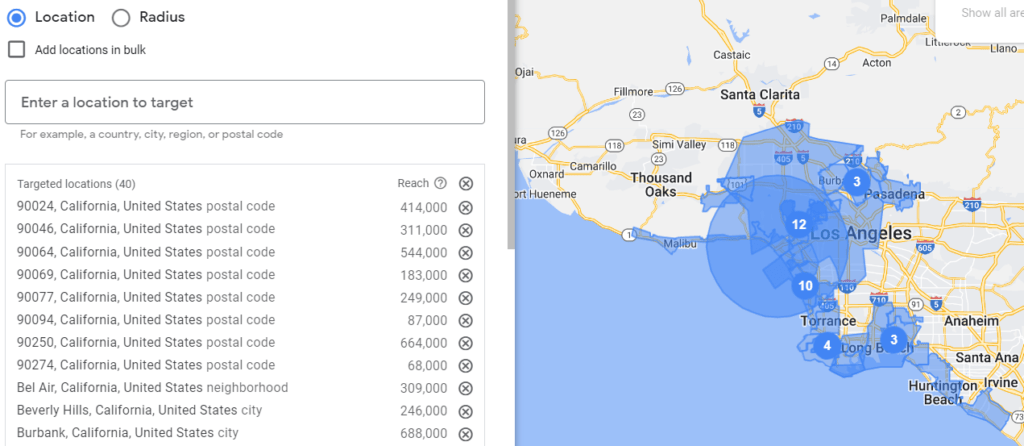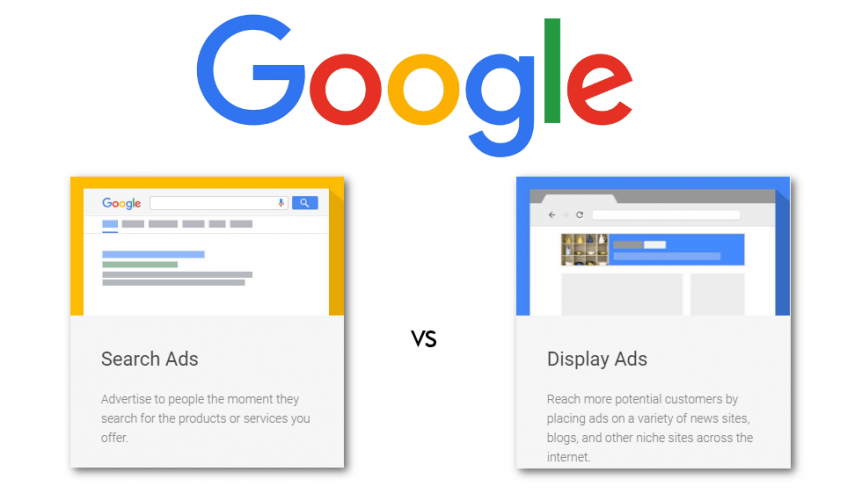If you know anything about growing your business through advertising efforts, you know Pay-Per-Click advertising (PPC) is one of the quickest ways to do that. PPC advertising allows you to reach an audience of users who are actively interested in a product or service that you are offering.
However, even more important regarding PPC is the cost of advertising. Depending on the demand for keywords or phrases that you are bidding on, the Cost-Per-Click (CPC) can add up quickly. In theory, the ideal PPC marketing plan should be so successful that the cost is trivial compared to what you get out of the campaign. You should make a sizable sale or profit, and earn a client for years to come that is significantly more than what you spent on getting that user to your site.
If that isn’t the case though, and your PPC advertising is taking a sizable chunk out of your wallet without achieving a high ROI, then you might need to make some changes to your efforts.
Good thing Torchlight Marketing is here to save the day!
We’ve curated an entire article on the best ways to save money on your PPC efforts in order for you to get the most out of your PPC advertising campaigns.
PPC Ad Copy
The first place to start in ways to save money in PPC is the most important part of PPC– your ad! More specifically, your ad copy – it plays a huge role in improving your CPC and saving you money in the long-term, and I am not just talking about the psychology (we will get to that later).
Your ad copy, or text includes the headlines and description text and all this plays into your Quality Score. Your Quality Score is a 1-10 score on how Google feels about the match between your keyword, ad copy and landing page (it also includes click-through rate – or how often the ad is clicked by people). In other words, how well the copy is written will affect your Quality Score and your CPC.
So you definitely want your ad copy to be easy to read and enticing. The more users that click on your ad, the higher the probability of increasing your profits. If you have a vague copy filled with grammatical errors, that might deter a user from clicking on your ad.
Taking these factors into account, invest time into your ad copy to save money!
However, just as important as the Quality Score is your Rank Score. This gets a little complicated but your wallet will be thanking you if you hang on with me here. Your Rank Score is determined by multiplying your Quality Score with the amount you’re willing to pay for each user click on your ad (your bid). This is what determines how high you rank when ads are displayed on search engines. This is why Quality Score is so important! A simple improvement in Quality Score – let’s say from 4 to 6 allows you to cut your bid by over 30% and still get the same rank score. This is huge!
While both of these are crucial players in your PPC budget, it’s important to know that you can win plenty of business even without being the first-ranking ad in search engines. You don’t need to break the bank to have a successful, highly-converting PPC campaign. All it takes is a little research and planning (which is what you’re doing right now!).
Geolocation
This one should be obvious, but you’d be surprised at how many people don’t filter by geolocation when it comes to their PPC.
Choosing the radius for which your ad should appear is crucial in not only giving yourself the best chance to be found (and turn a profit) but also save you some money. This is particularly the case for businesses that have a storefront selling products, as well as the service industry to set the geographic limit in which they would go out to be of service.
For example, if you’re a small plumbing business, you want to set your ads within a certain distance to where you’re willing to drive to perform a service. You don’t want someone 100 miles away asking for help with their leaking faucet.
Additionally, geolocation can be helpful in the instance of events. If your company is hosting a pop-up event and wants locals to come participate, you might want to target a specific suburb, zip code or city to get the highest chances of participation.
Ad Scheduling
Ad Scheduling, or sometimes known as “day-parting”, is similar to setting up your ad’s geolocation as it helps to maximize the opportunity of your ad reaching the right audience. This is an essential part of a successful campaign, especially if your budget isn’t the biggest.
Depending on your industry, setting a specific time for your ads to run can make a significant difference. For example, if your business is open from 9am to 5pm, then allowing your ads to run during those times will allow for users to call with questions or for more information regarding your products or services. If you are an online clothing store, for instance, scheduling your ads to run when your target audience is most active will give you the best opportunity to reach them.
Another form of strategic scheduling is where you avoid running your ads from midnight-6am and essentially are waiting for the market to go back down.
When running PPC ads, you set a limit on your daily budget– how much money you are willing to spend on your ads in one day. The only thing is, is that your budget can vary day-to-day depending on how many other businesses are bidding on the same keywords you are bidding on. The more people bidding on a keyword, the higher the cost of that keyword will be (and the less amount of times you can run your ad without hitting your daily budget).
From midnight-6am, it’s fair to say most people are not doing any serious spending. Whether that be for businesses such as plumbers, lawyers, moving companies– marketing agencies– most people are unlikely to be doing any true purchasing without at least talking to the business first (or seeing the sunrise).
In short, any ads you are running for those 6 hours are essentially a waste of money and your daily budget in many cases.
What you want to do is “wait-out” the competition– let your competitors waste their daily budget (or most of it) before you even begin running your ads for the day. Once your competition meets their budget, the price of the keywords will go down since there are less people bidding on those keywords.
Now as with everything in PPC, this will vary depending on your industry and your particular keywords. Nonetheless, it is definitely a tactic you will want to implore to save you some money.
Conversion Tracking
Conversion tracking is one of the best ways you can decipher how well your ads are working. One of the biggest mistakes you can make is measuring your ads’s performance on the impressions and clicks you get. Don’t get me wrong, you can’t drive sales without either of these, however, using this as the only metrics for evaluating success is very misleading.
One of the major reasons for this is that impressions and clicks are fairly easy to get.
Let’s take one of those tall, inflatable, flappy, tube-men you see in front of car dealerships or mattress stores as an example: if you’re driving down the road and you look up because one caught your attention, boom, that is an impression. Are you going to stop what you’re doing to go investigate more? Not necessarily, but it did its job in getting your attention.
When it comes to clicks, this is where clickbait comes into play. For instance, if you see an article titled, “Miracle Pill Made Me Look 30 Years Younger!” you might want to click on that to look into it further. However, you come to find out that the pill in conjunction with tens of thousands of dollars of plastic surgery is what made the advocate appear 30 years younger. Therefore, that article title was clickbait.
While it’s beneficial to have a high number of impressions and clicks on your ads, that doesn’t necessarily hold a lot of value in evaluating the impact on growing your business. What you want to focus on is measuring your performance based on actions that make you money: phone calls, shopping cart purchases, contact form fill outs, appointment requests, etc.
Once you start measuring action-based performance, you will be able to decipher what is working, what isn’t and make adjustments from there. The best way to save you money is to be looking in the right place from the beginning.
Display Ad Tactics
These next few tactics are particularly geared towards display ads, most of which you hopefully already know, but if not that’s okay too.
First and foremost, usually you want to avoid putting display ads on YouTube. The most inventory on YouTube is placements geared for teenagers (kids are entertaining themselves with all kinds of how-to videos, music videos, and the list), so if you’re advertising something that contextually doesn’t make sense to be advertised to teenagers, don’t do it with a static ad. It will simply be a waste of money.
Similarly, if you aren’t advertising to kids, turn off display ad placements on mobile apps. Many apps nowadays are games or entertainment geared towards children, so if that contextually doesn’t relate to your demographic you’ll want to ensure that is turned off! Now this is a hard thing to actually do and requires Windows Software and is not on the Google Ads site! So work with your PPC expert if you are having trouble filtering out ad placements on apps.
Lastly, we want to touch on the topic of ad placement. This can be particularly helpful for numerous reasons. First and foremost, you want to make sure your ads are working for you and showing up where you want them to. On the other end of the spectrum, you also don’t want your ads displayed on certain websites that are not for your targeted demographic, on a site that is in a foreign language not targeted for your demographic or worse, on any inappropriate or harmful website that can in turn, hurt your brand.
To have more control over where your ads are displayed, you’ll want to adjust your target settings in your Google Ads account.
Search Ad Tactics
Lastly, we want to briefly touch on tactics geared towards search ads. Once you have found your targeted keywords, you’ll want to be sure to create separate campaigns for groups of keyword(s). The most common keyword groupings are: High Performers, B-class, branded, and competitors. This will help you prioritize your budget to the keywords that convert the best, saving you money. Most commonly, brand terms, such as your company names, have a lower CPC as they’re less widely searched.
One thing you’ll want to be careful of is broad-match search terms– something that is too common that too many people are searching can result in a high CPC and low conversion rate. Take time to do some proper keyword research and find out what your high-converting keywords are. It’s helpful to prioritize your budget to these campaigns as well as your brand campaigns; the rest of your keyword campaigns should be a lower priority when it comes to your PPC budget.
Takeaway
Budgeting your PPC campaign efforts doesn’t need to be as daunting as it might seem but it definitely requires attention to detail. Making a few adjustments here and there, all while being properly informed on effective, budget-conscious tactics can go a long way.
You want your PPC to make you money, not lose it! Hopefully today you were able to take away a few points and apply them to your PPC campaigns.
Now that you’re saving money on your PPC, let’s dive into the future of PPC: video!
To learn more about our PPC services, contact us on our website or give us a call at (805) 481-0118.





